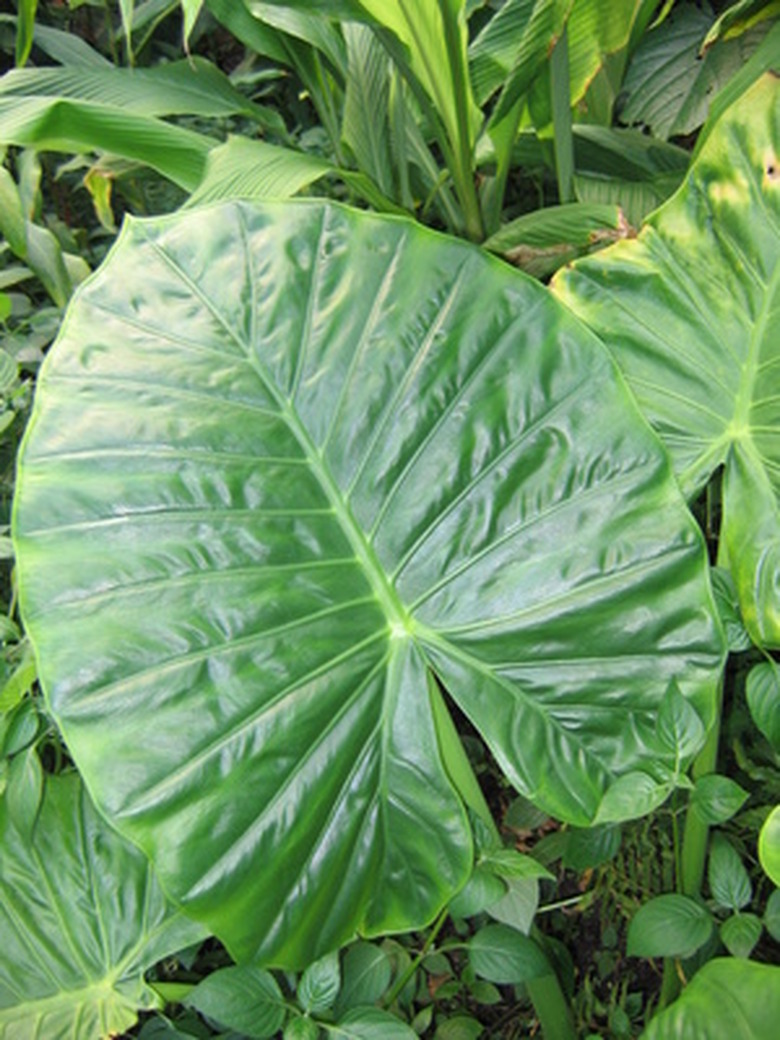Tropical Leaf Identification
Having evolved in a geographic zone that includes both humid rainforest and dry savanna, tropical plants make up two-thirds of the world's flora and encompass a dizzying array of sizes, shapes and colors. Focusing on a few key characteristics makes tropical leaf identification a less daunting task. Pay special attention to what truly stands out about the leaf, such as a unique shape or venation.
Leaf Shape
Tropical plant leaves come in a remarkable variety of shapes. Tropical plants that evolved below the rainforest canopy have large leaves that improve their absorption of light energy. Plants in the heliconia family have elliptical leaves that can reach up to 4 ft. long, while anthurium leaves are heart-shaped and broad. Some tropical leaves are soft and feathery looking with many compound leaves, such as the lace fern, or complex lobes such as those of the monstera vine.
- Having evolved in a geographic zone that includes both humid rainforest and dry savanna, tropical plants make up two-thirds of the world's flora and encompass a dizzying array of sizes, shapes and colors.
- Some tropical leaves are soft and feathery looking with many compound leaves, such as the lace fern, or complex lobes such as those of the monstera vine.
Leaf Arrangement
Leaves can grow directly out of the ground or along a stem or vine. Leaves growing on a stem most commonly appear in opposite or alternate arrangements or radiate from a central point at the tip of the stem, such as a fan-leafed palm. Some leaves clasp the stem, as with the immature leaves of a eucalyptus.
Leaf Veins
Because many tropical leaves are large, it is easier to see the patterns of their veins clearly. Banana leaves have pinnate veins that are spaced evenly and lie parallel to each other. Netted venation forms a delicate web-like pattern, while palmate venation radiates from the bottom of the leaf. Often, multiple forms of venation occur on one leaf, such as the balsa tree, with palmate primary veins, pinnate secondary veins and netted tertiary veins.
- Leaves can grow directly out of the ground or along a stem or vine.
- Leaves growing on a stem most commonly appear in opposite or alternate arrangements or radiate from a central point at the tip of the stem, such as a fan-leafed palm.
Leaf Margins
Careful examination of the edge of the leaf also provides identification clues. Most tropical plant leaves have smooth edges, but some, such as the sleeping hibiscus, are toothed. Begonias have double serration that creates a fringe effect. Those with smooth edges may also be flat or wavy like crumpled fabric, such as the leaves of the Thai ginger plant.
Considerations
Other observations may help narrow the possibilities. Most rainforest leaves are smooth and waxy to allow water to flow off of them; leaves from more arid regions of the tropics are covered in small hairs to prevent moisture loss. Crushing a leaf can release odors that may be a useful identifying feature. If the whole plant is available to observe, note whether the plant is a tree, shrub, vine or other herbaceous perennial.
- Careful examination of the edge of the leaf also provides identification clues.
- Those with smooth edges may also be flat or wavy like crumpled fabric, such as the leaves of the Thai ginger plant.
